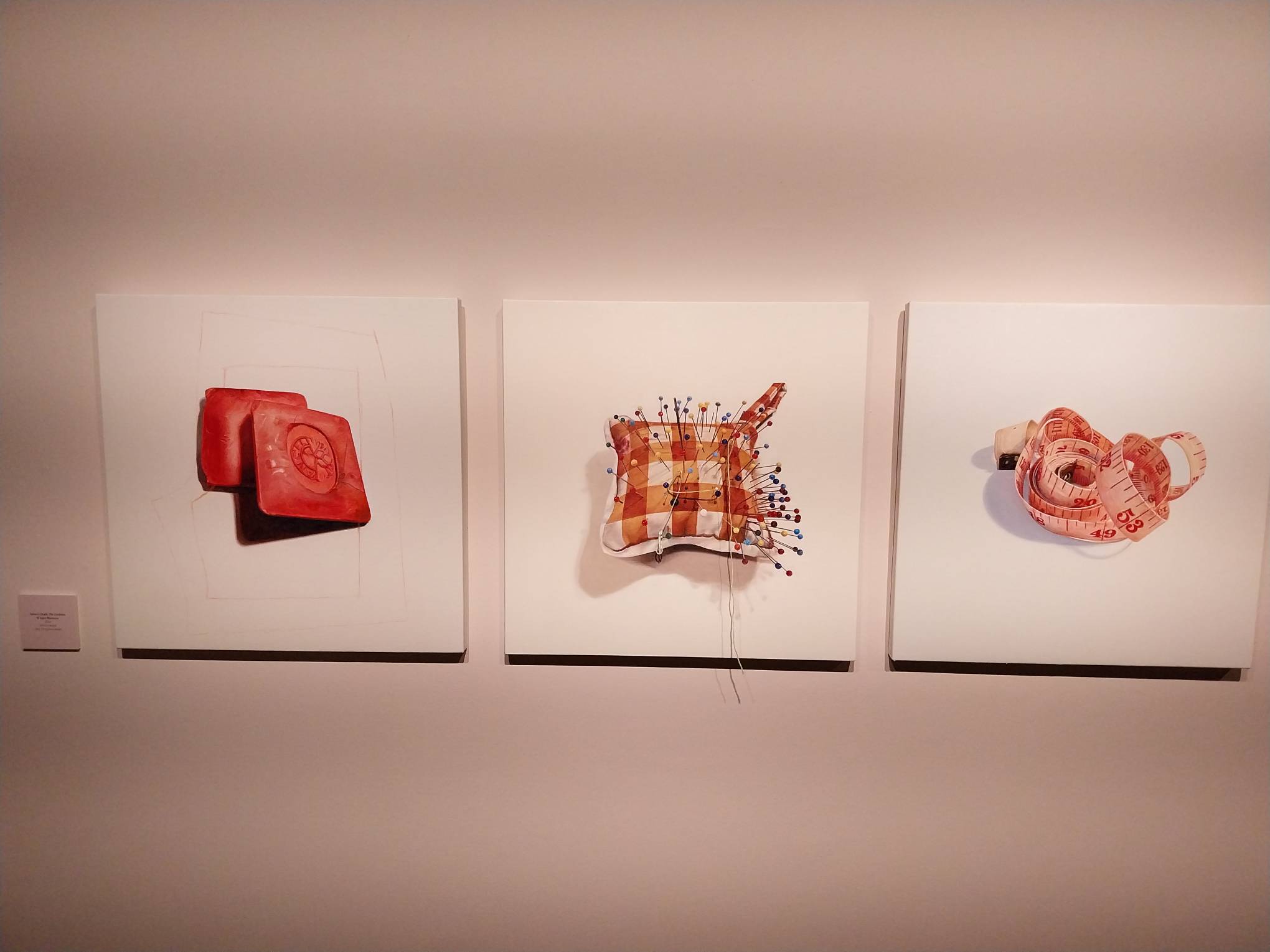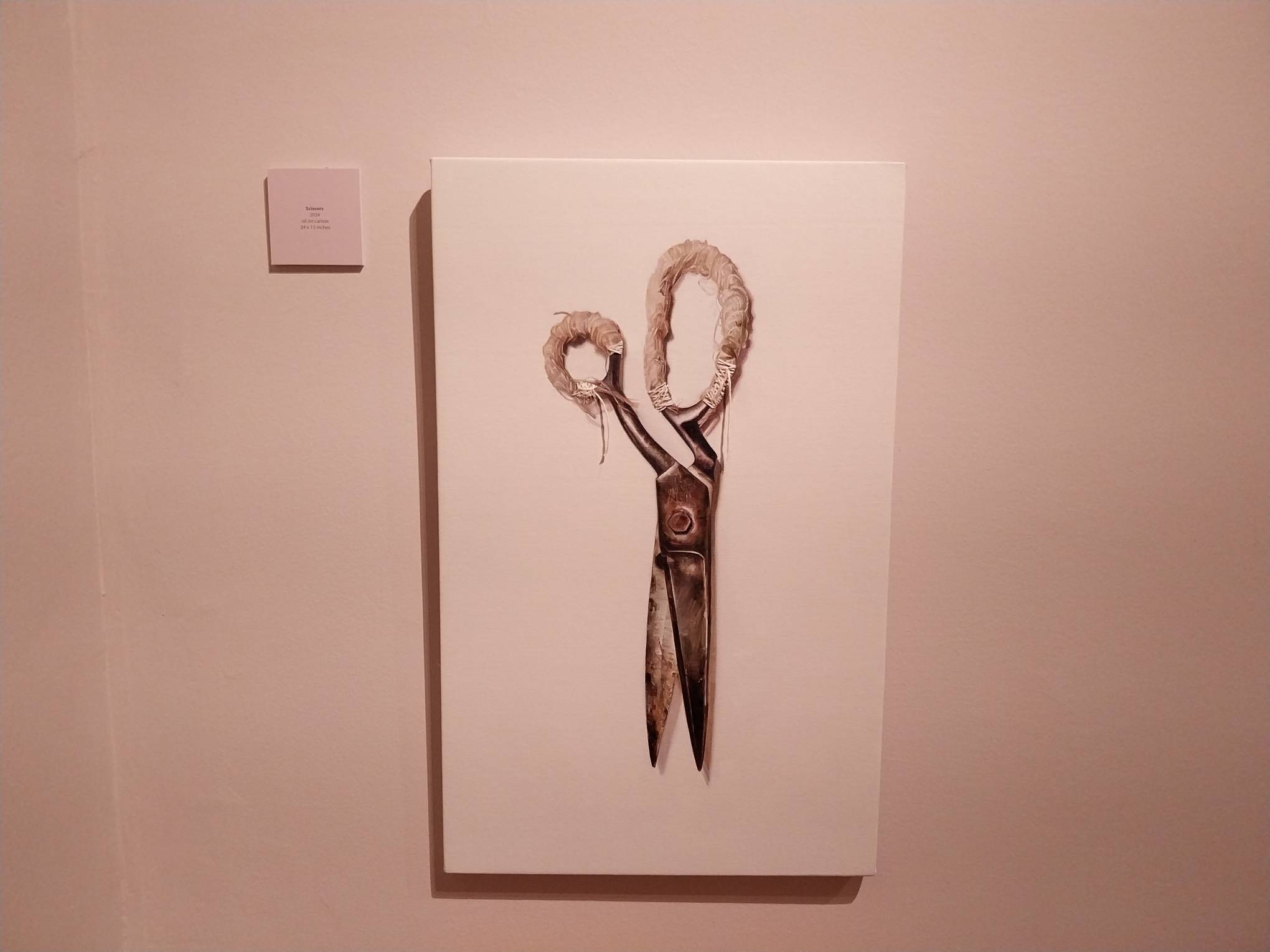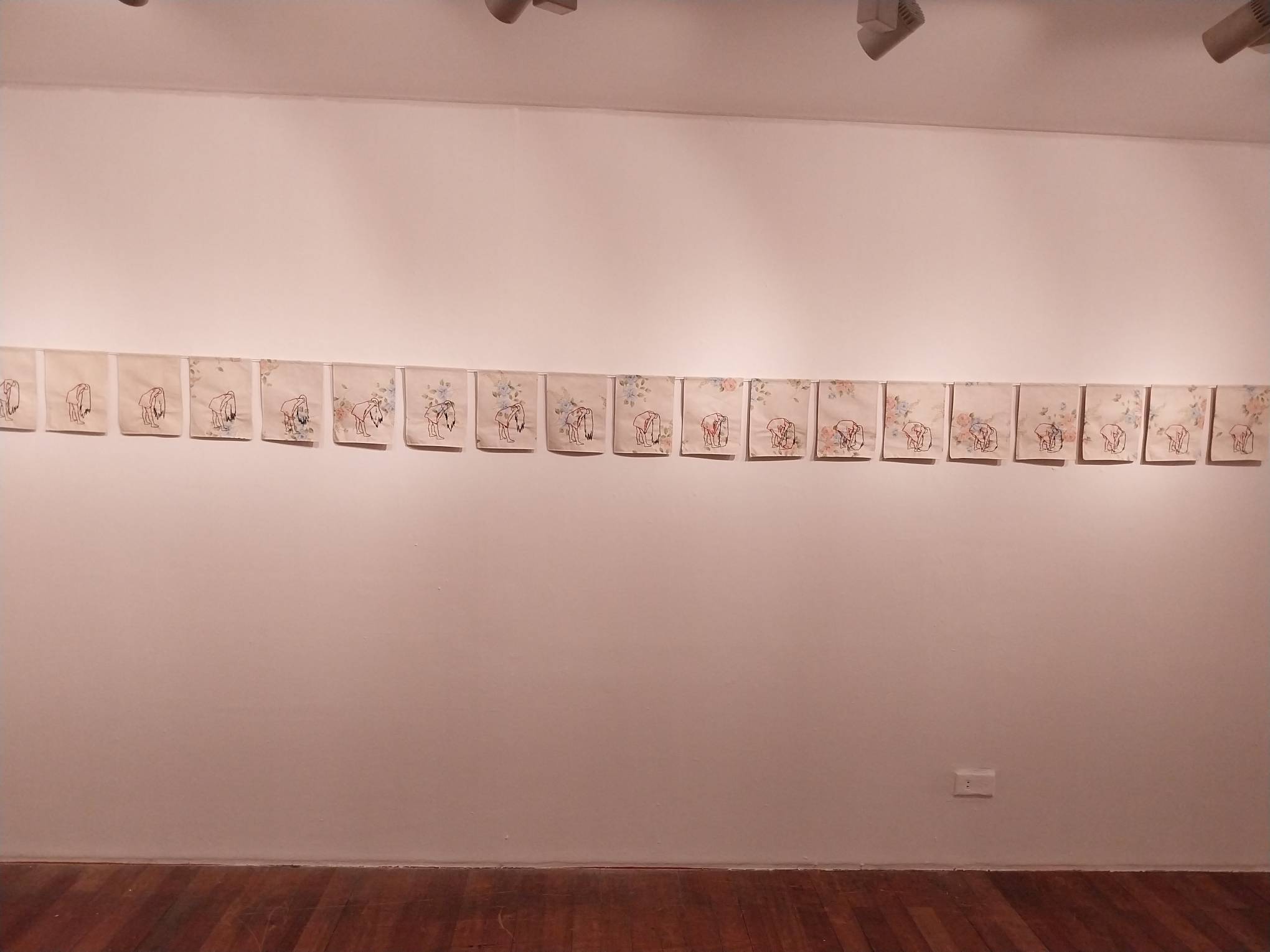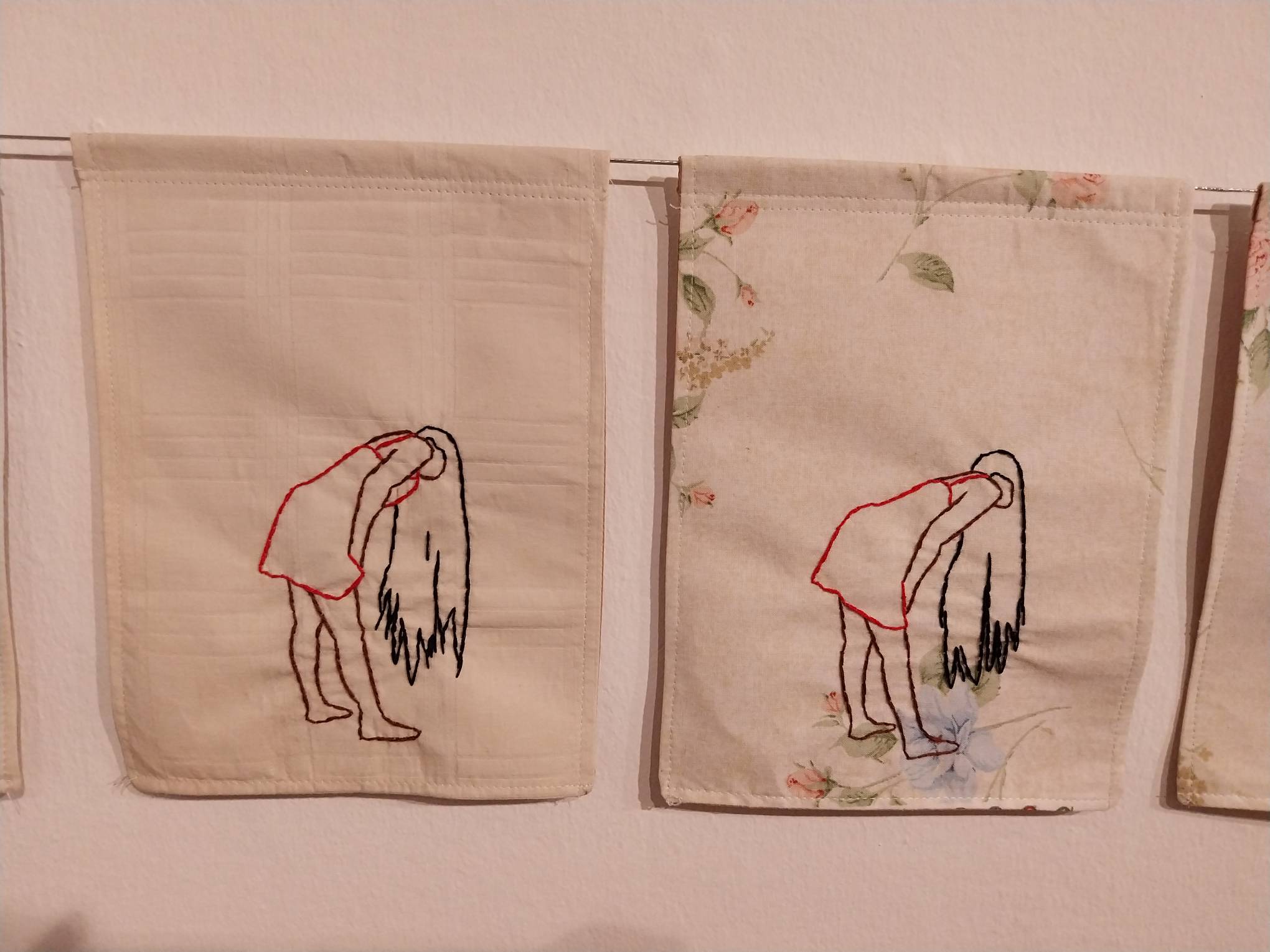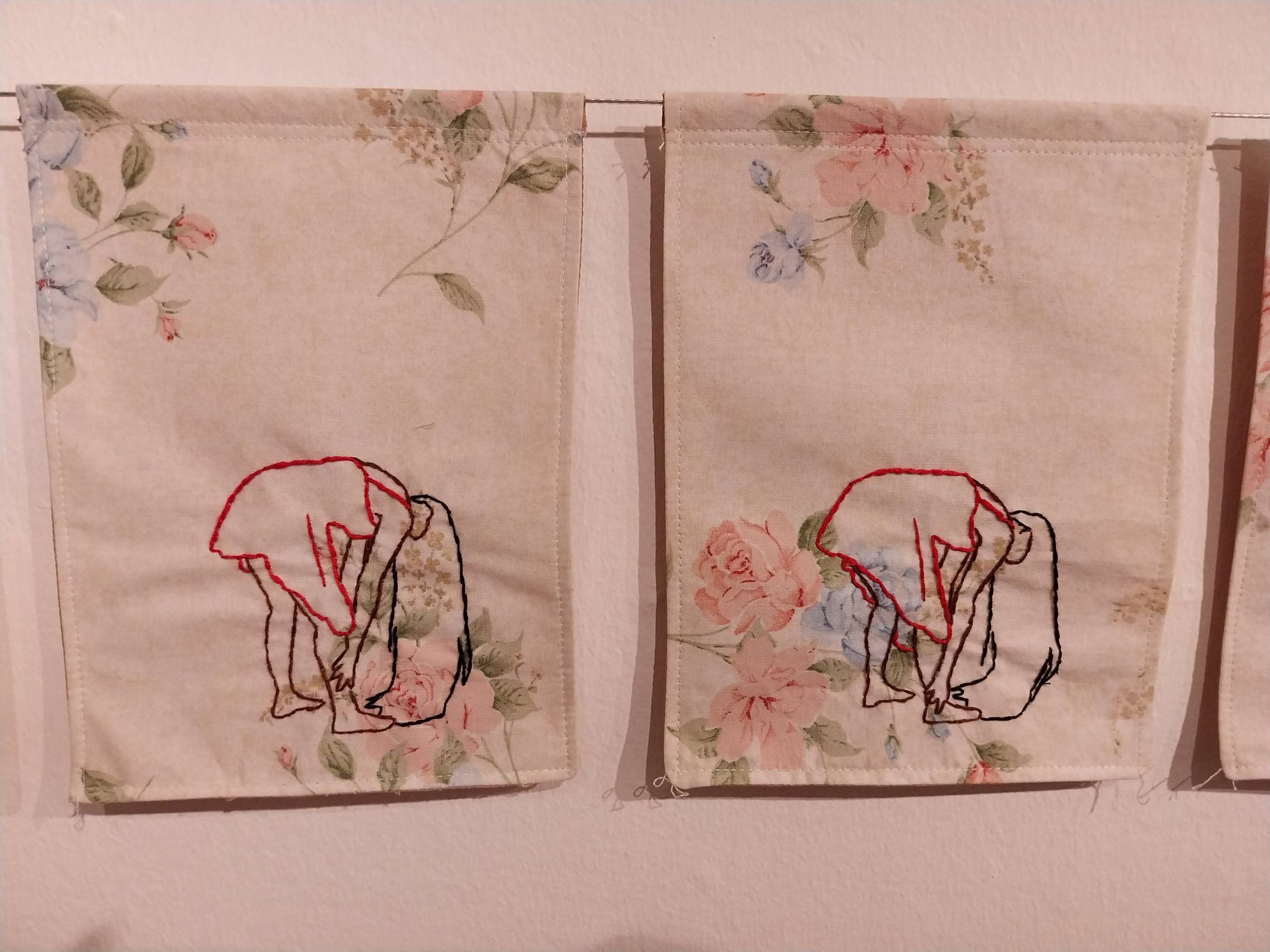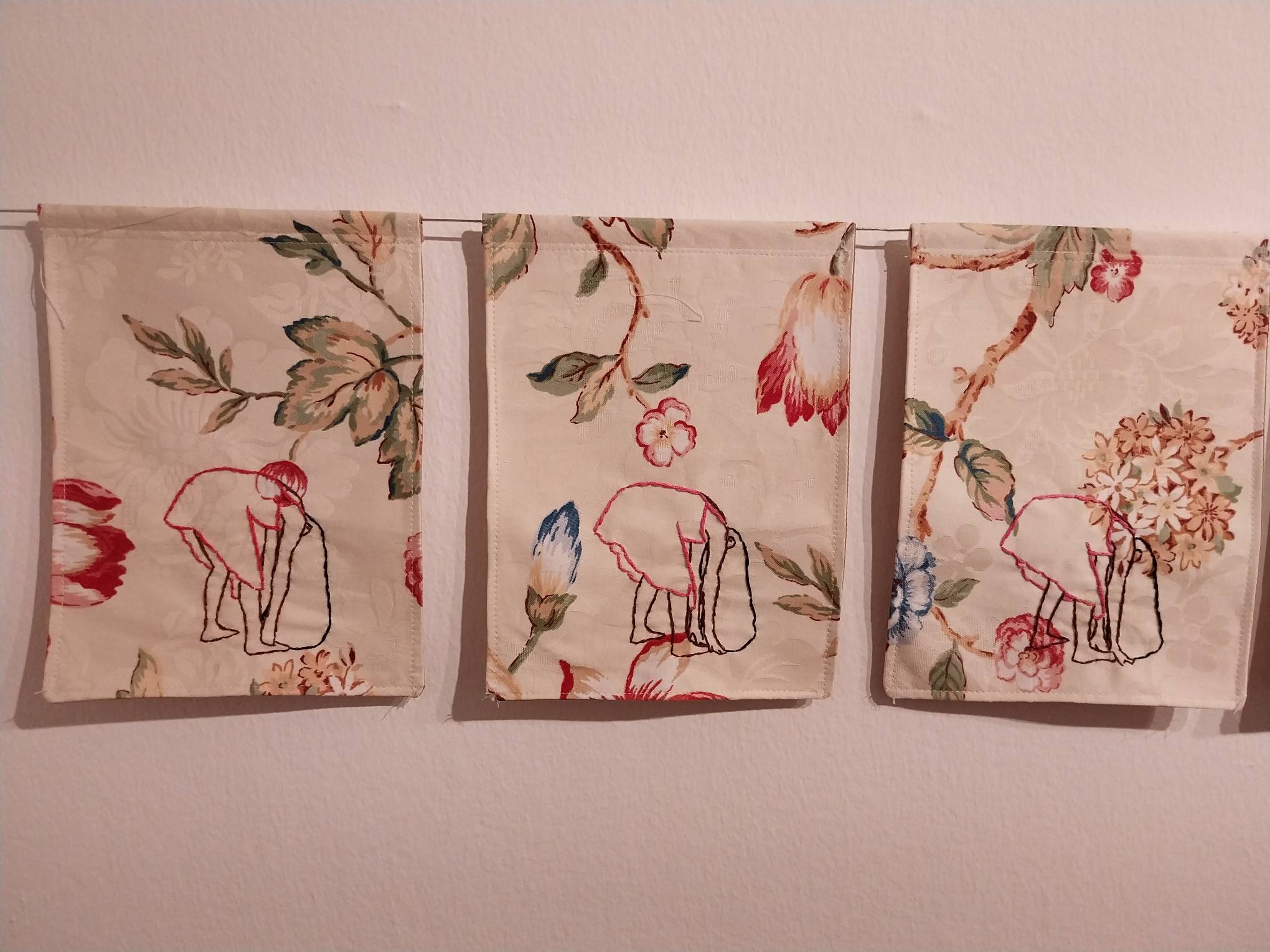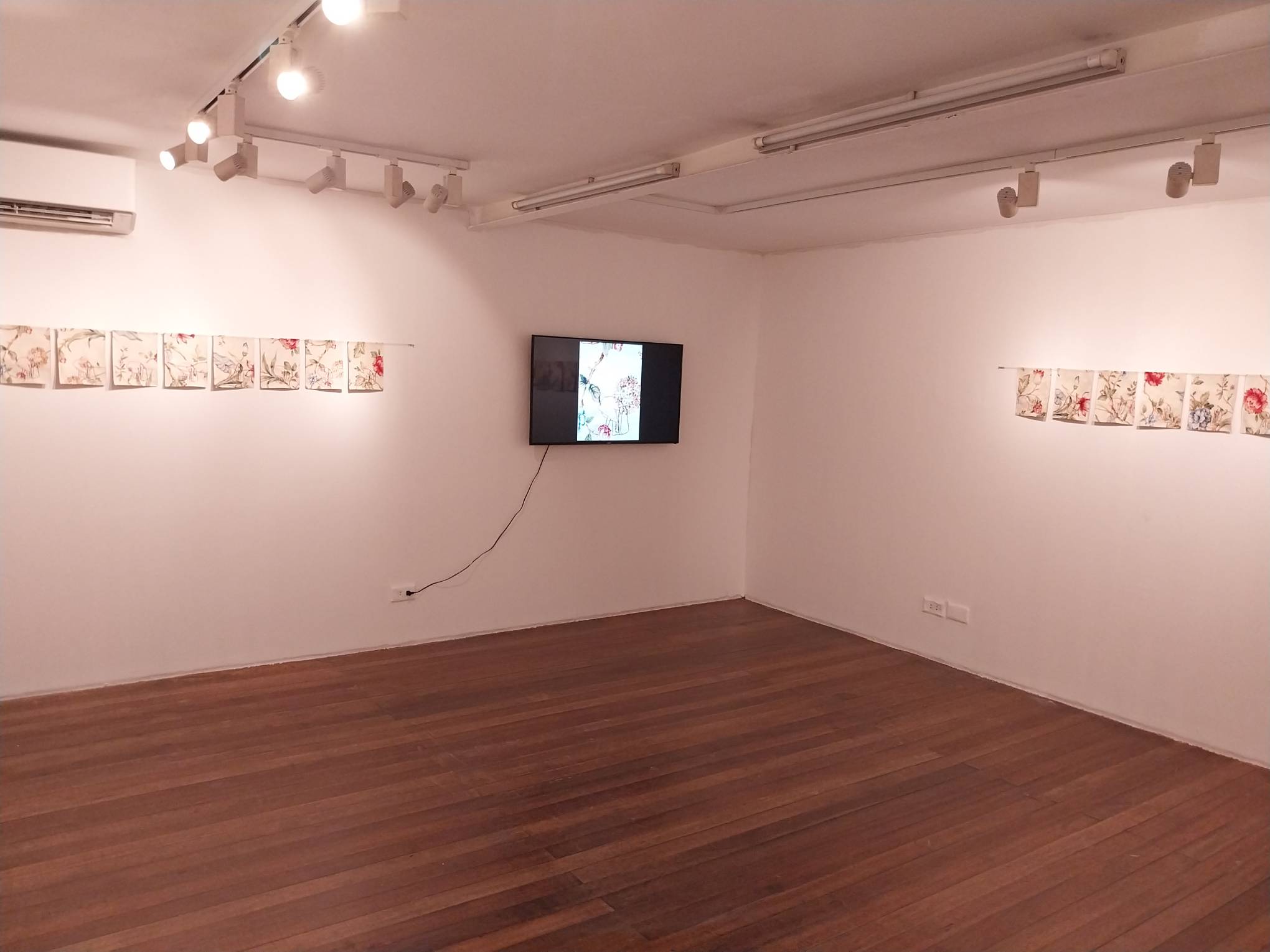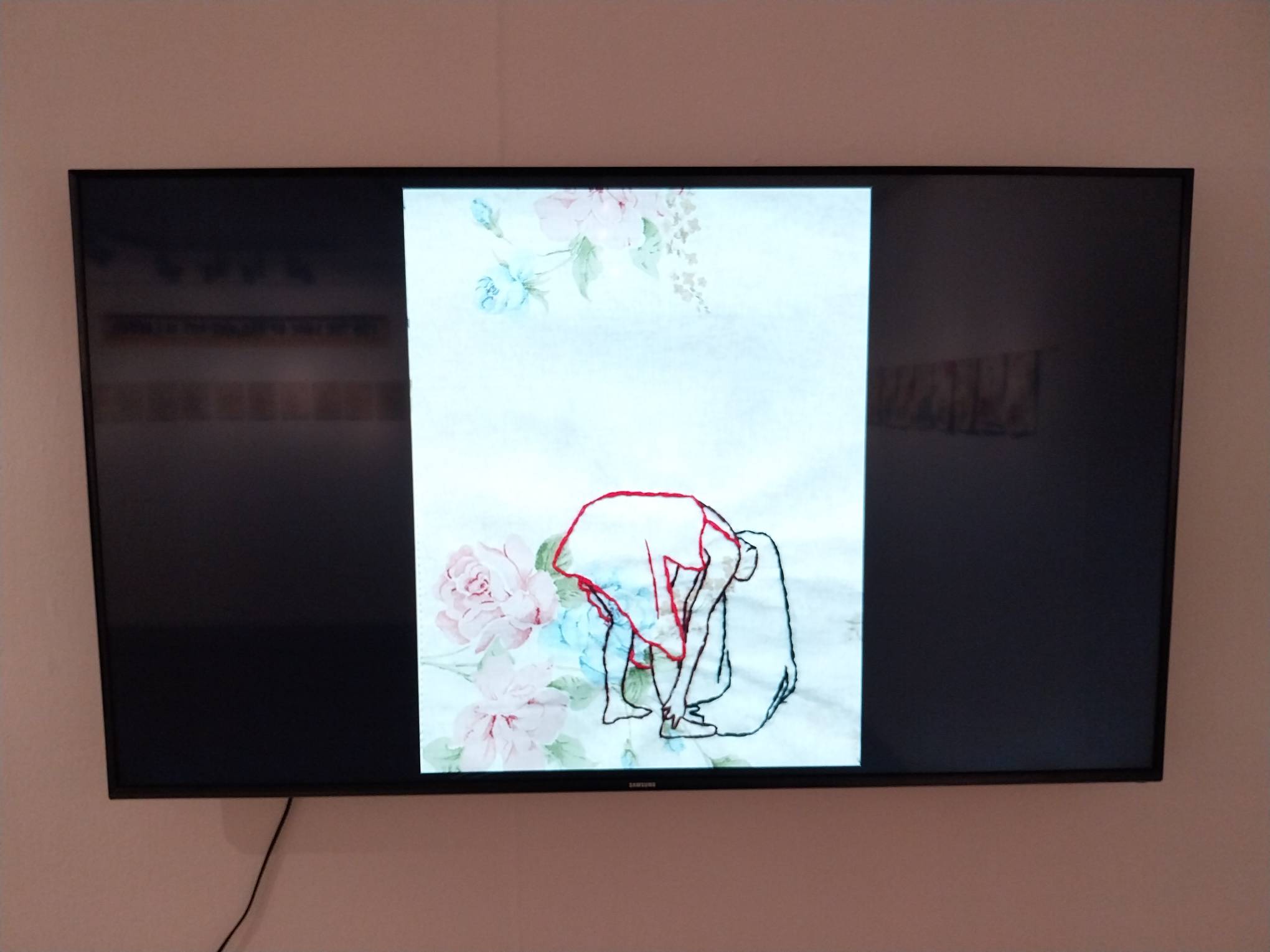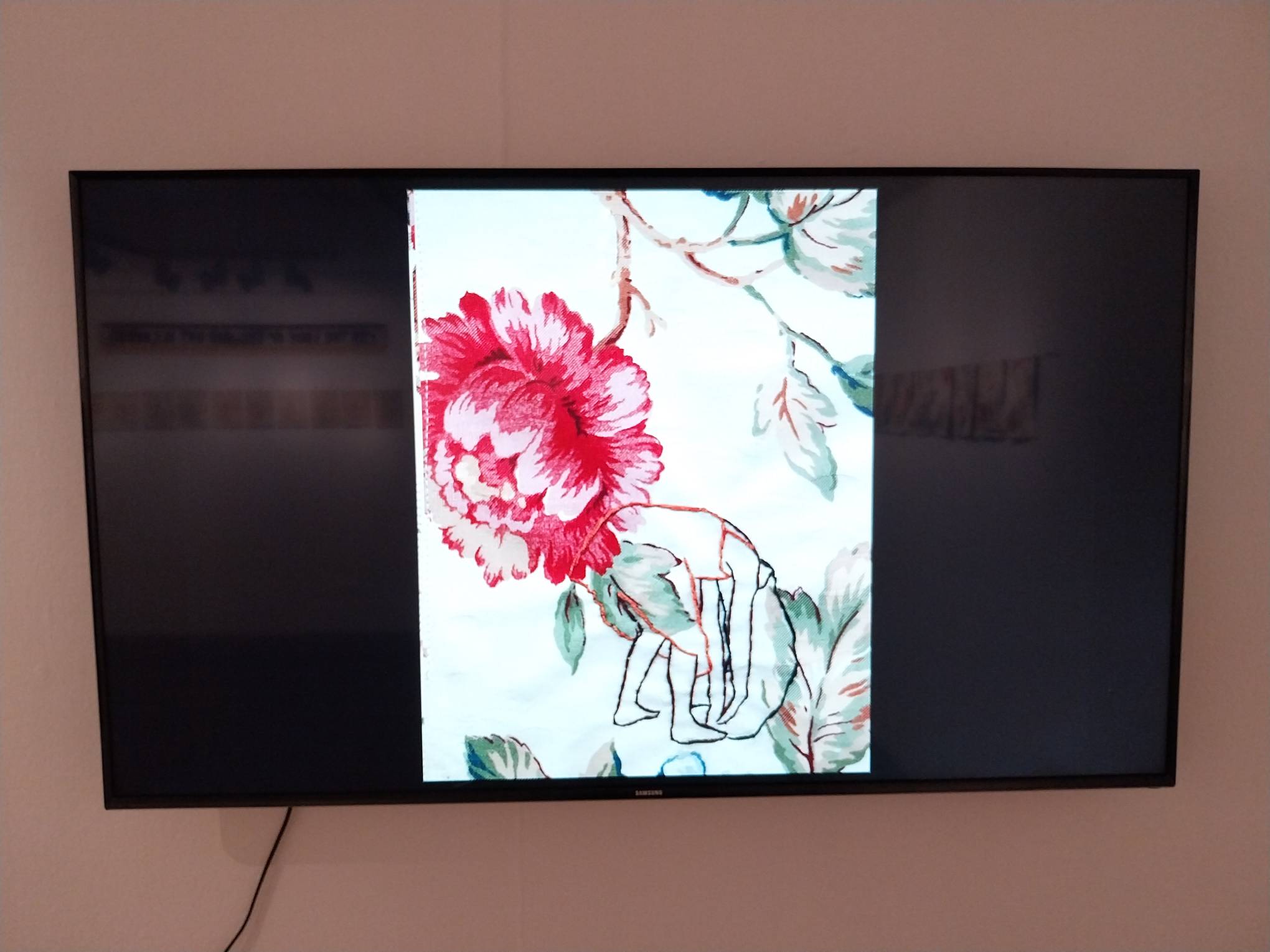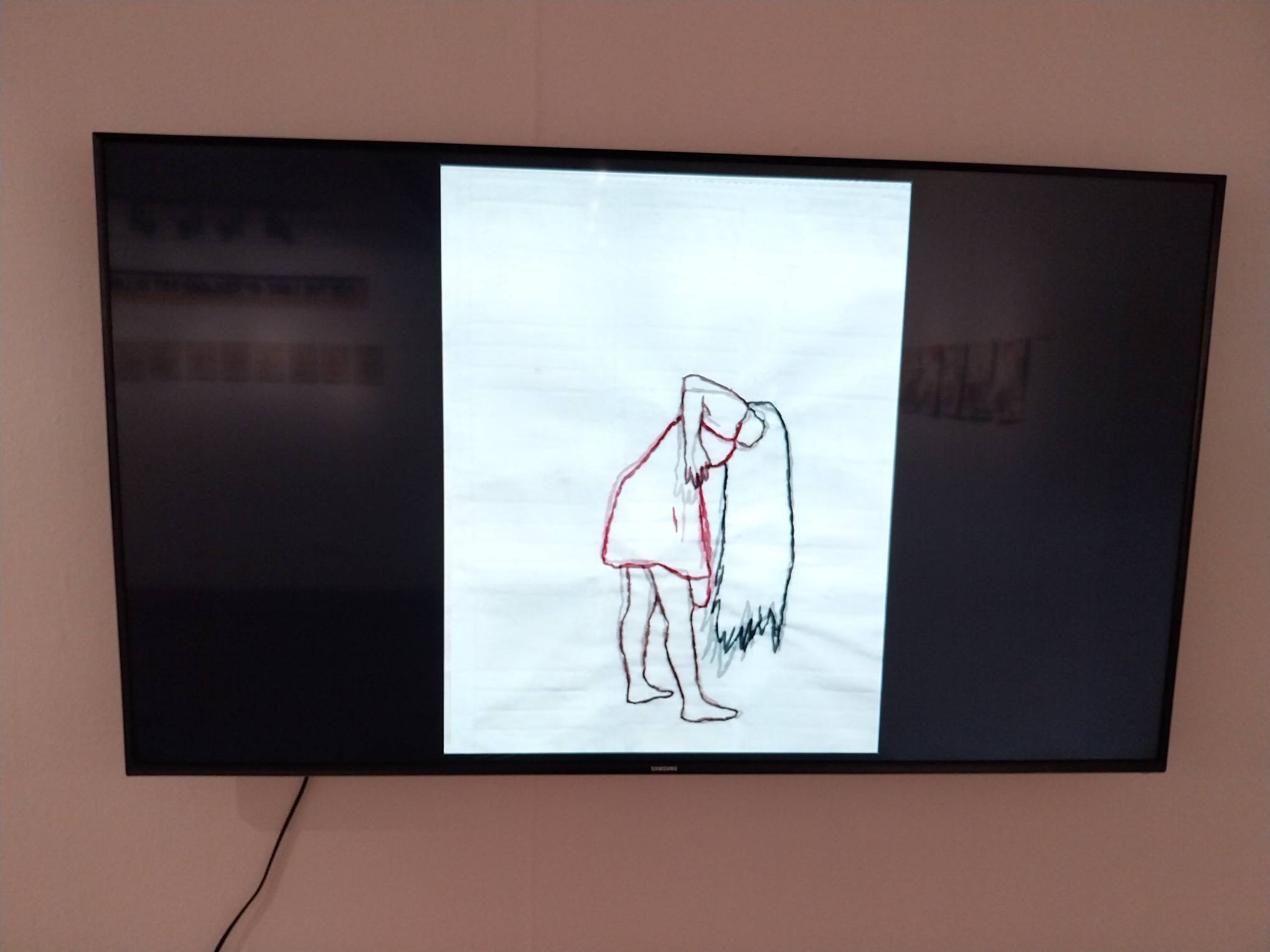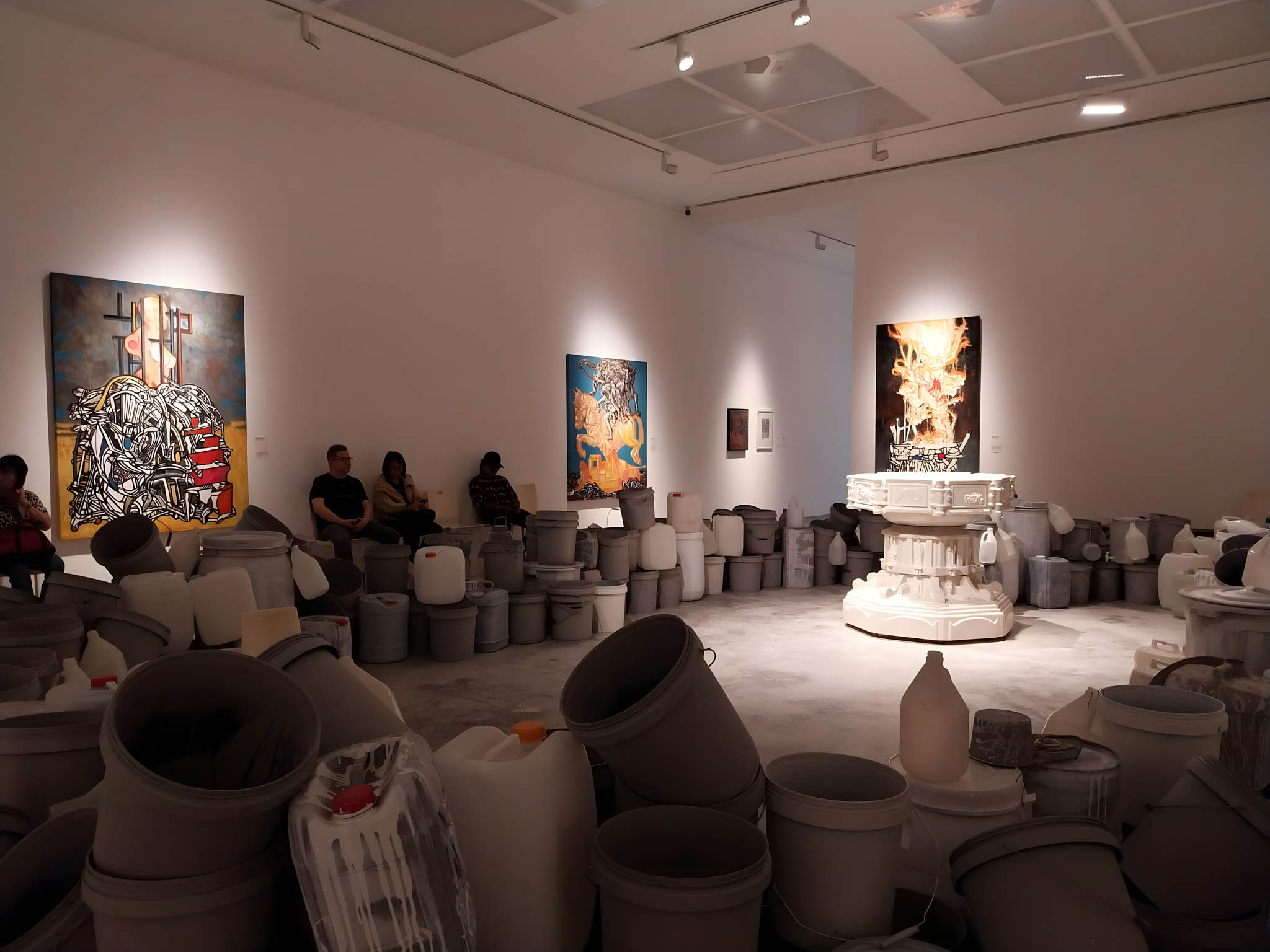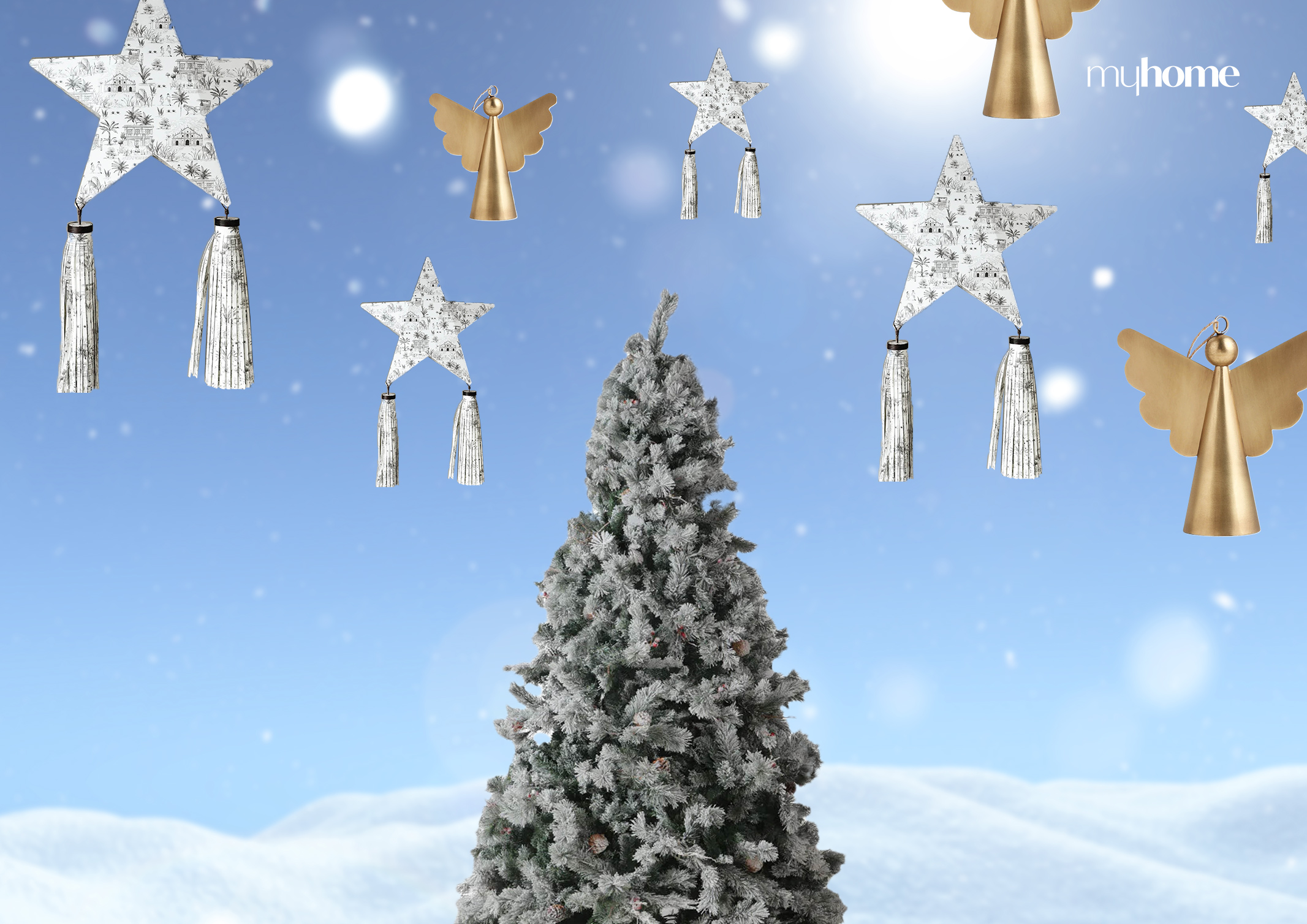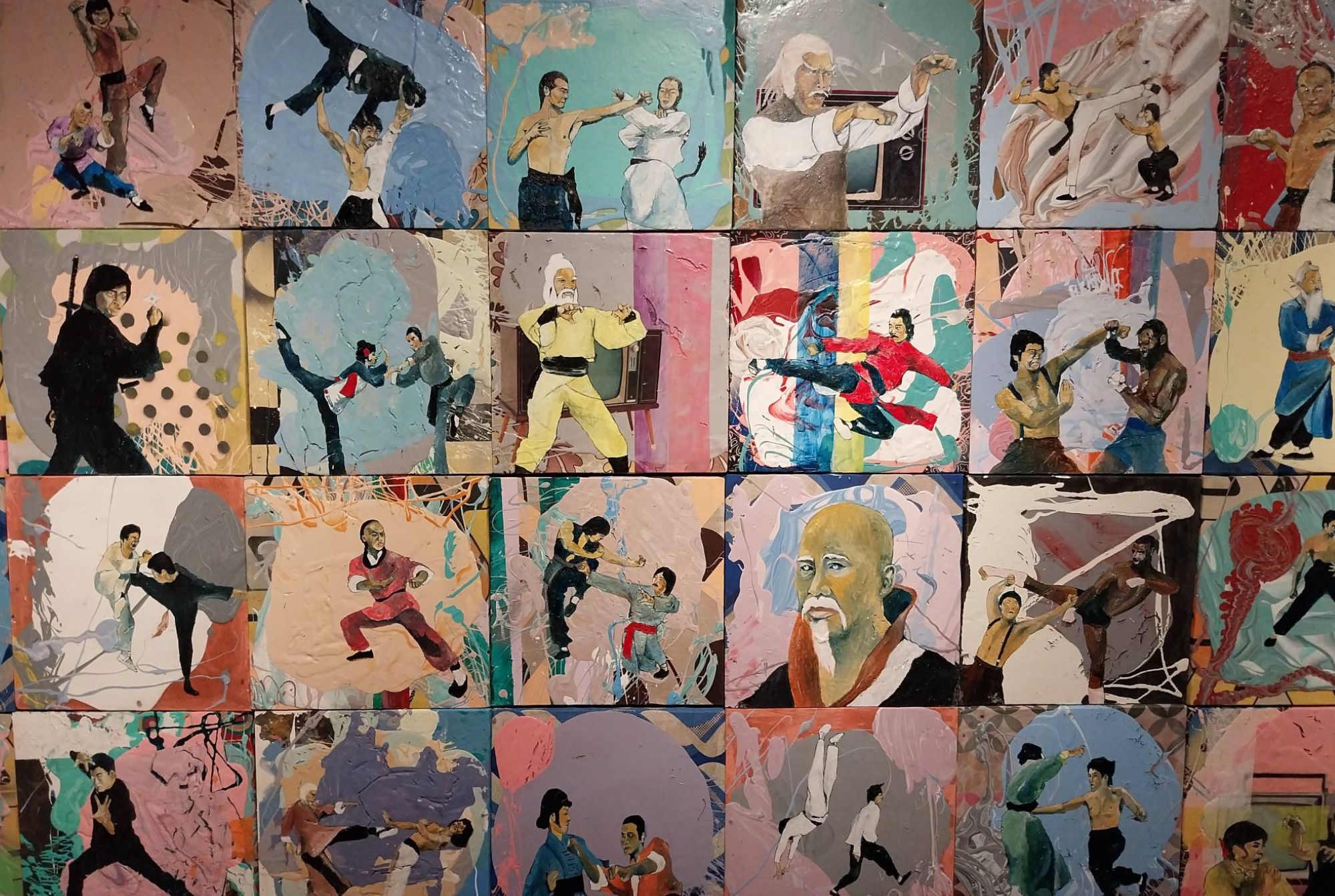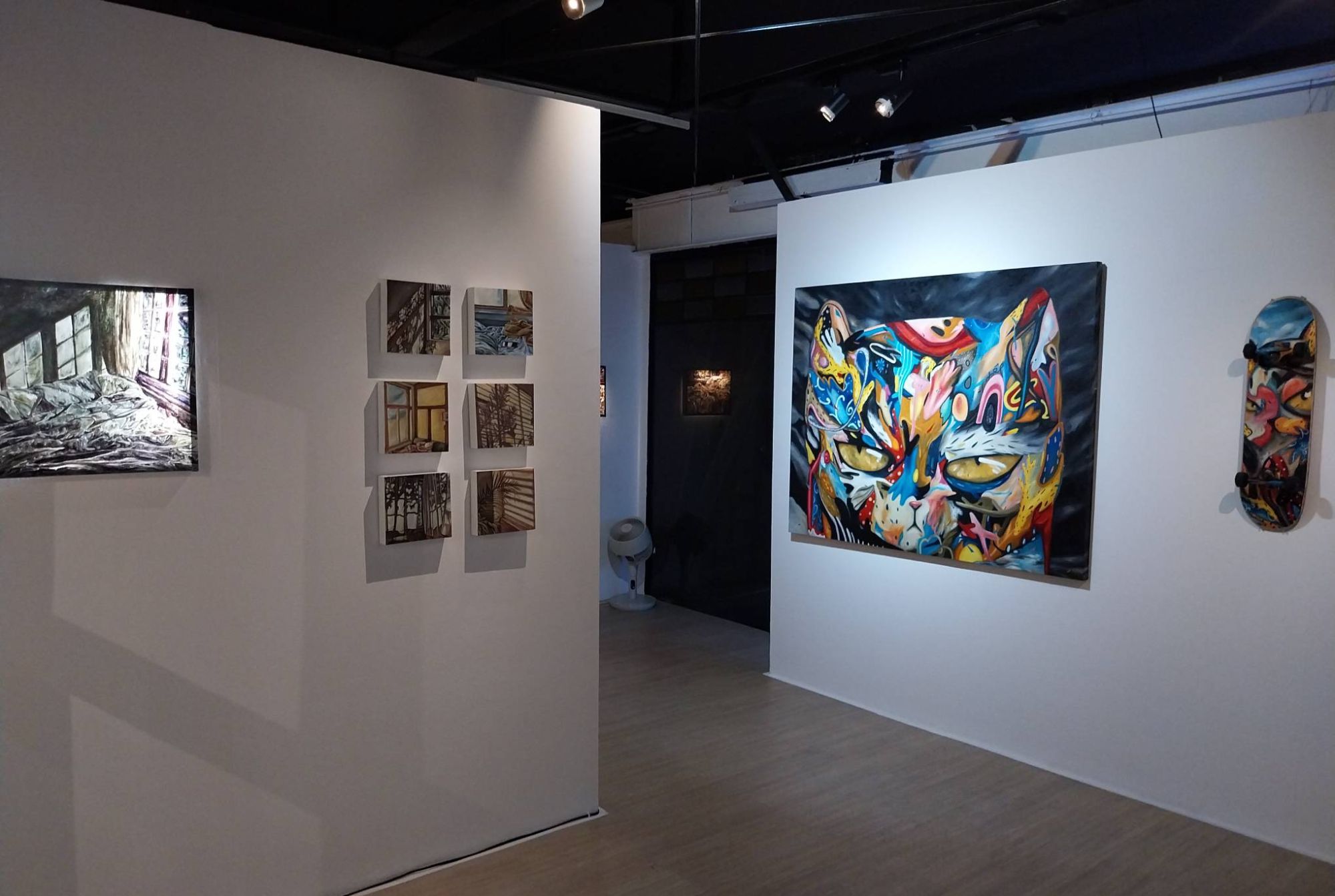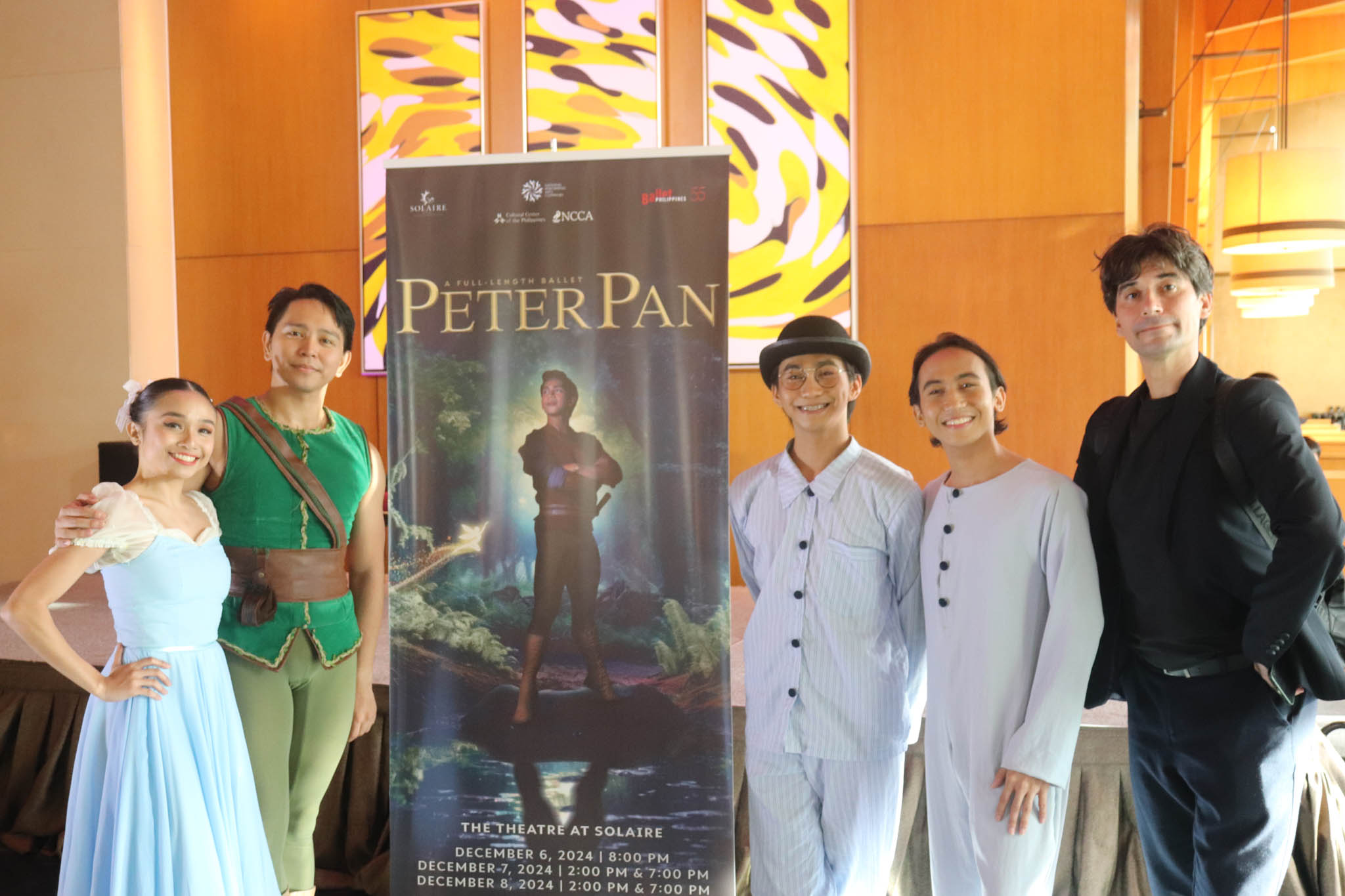There is no excerpt because this is a protected post.
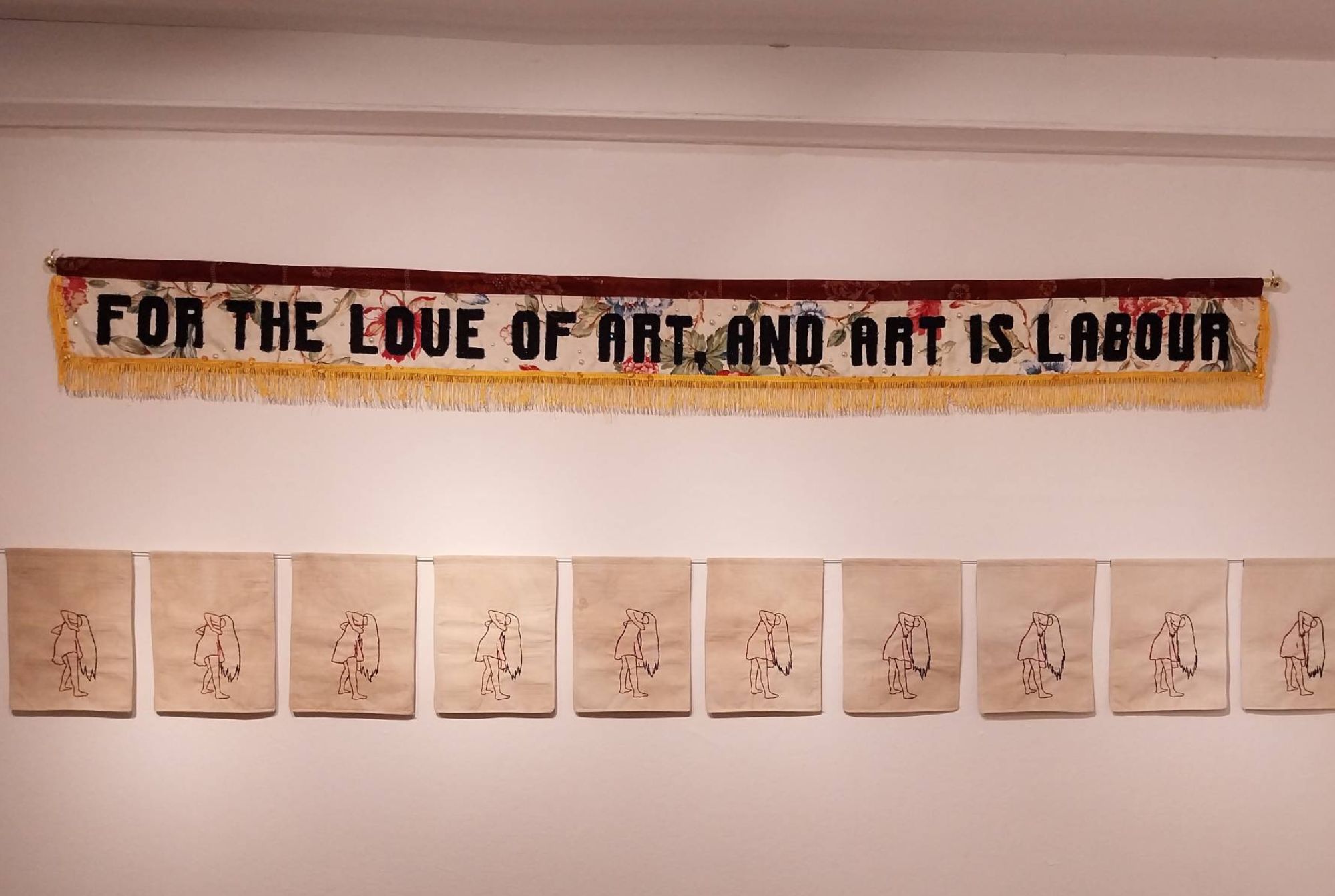
Finale Art File Opens Three New Exhibits for November
For their November line-up of exhibits, Finale Art File in Chino Roces, Makati featured three artists with incisive individual styles that craft an interesting perspective into how we see artistry as a whole.
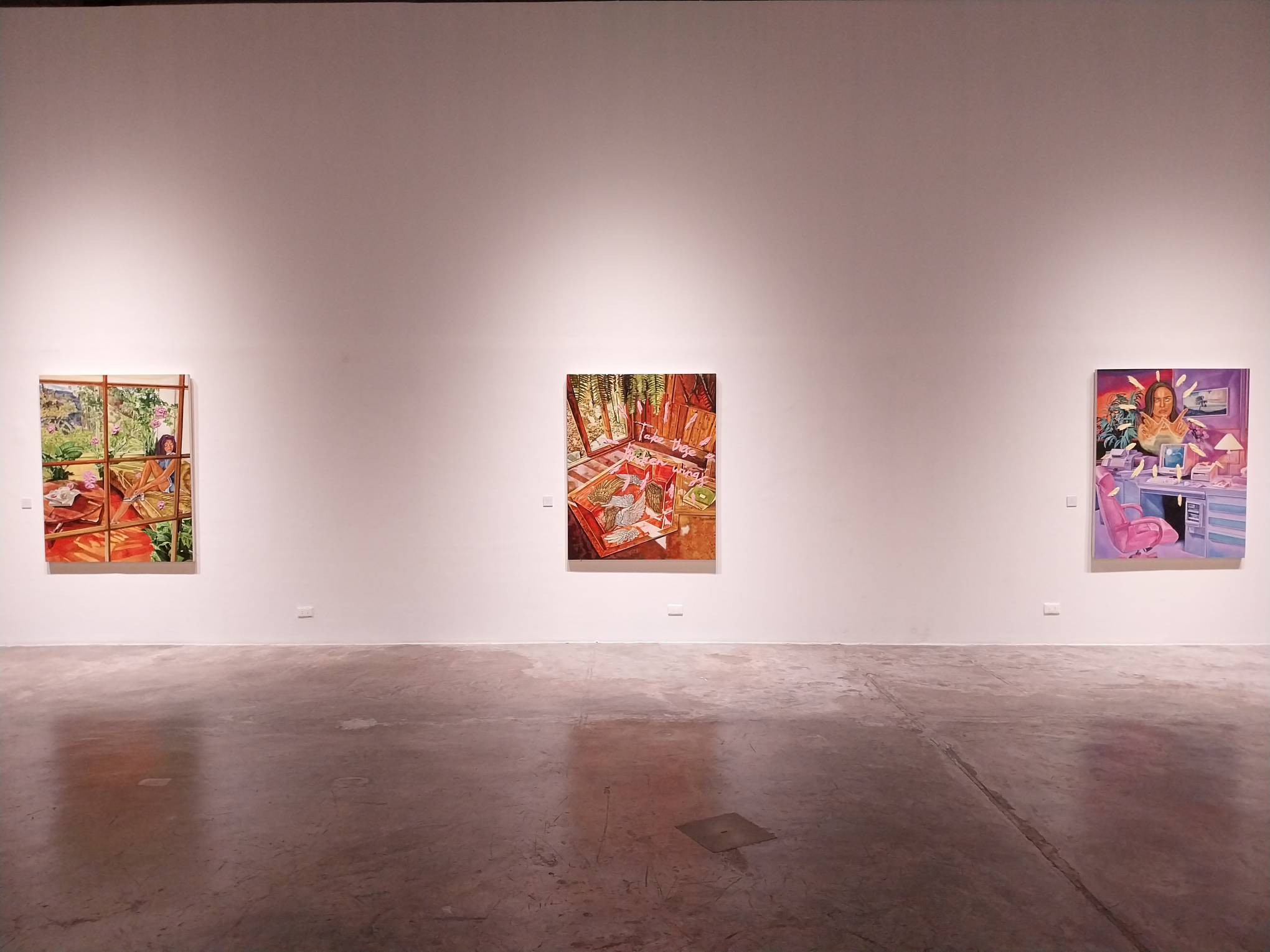
The three exhibits for this month feature textile artist Tekla Tamoria and painters Tiffany Lafuente and Garryloid Pomoy. These artists explore color and texture in different ways, personalizing their art towards their experiences. Overall, they find new ways to engage their audience towards the personal journeys that inform their art.
‘Human Nature’
Tiffany Lafuente’s exhibit, Human Nature, speaks to her own personal relationship with the environment around her, and how that informs her perspective of the world. Lafuente, inspired by how plant life became ornamental for many during the pandemic, seized upon a depiction of nature that actively encroaches into our daily life.
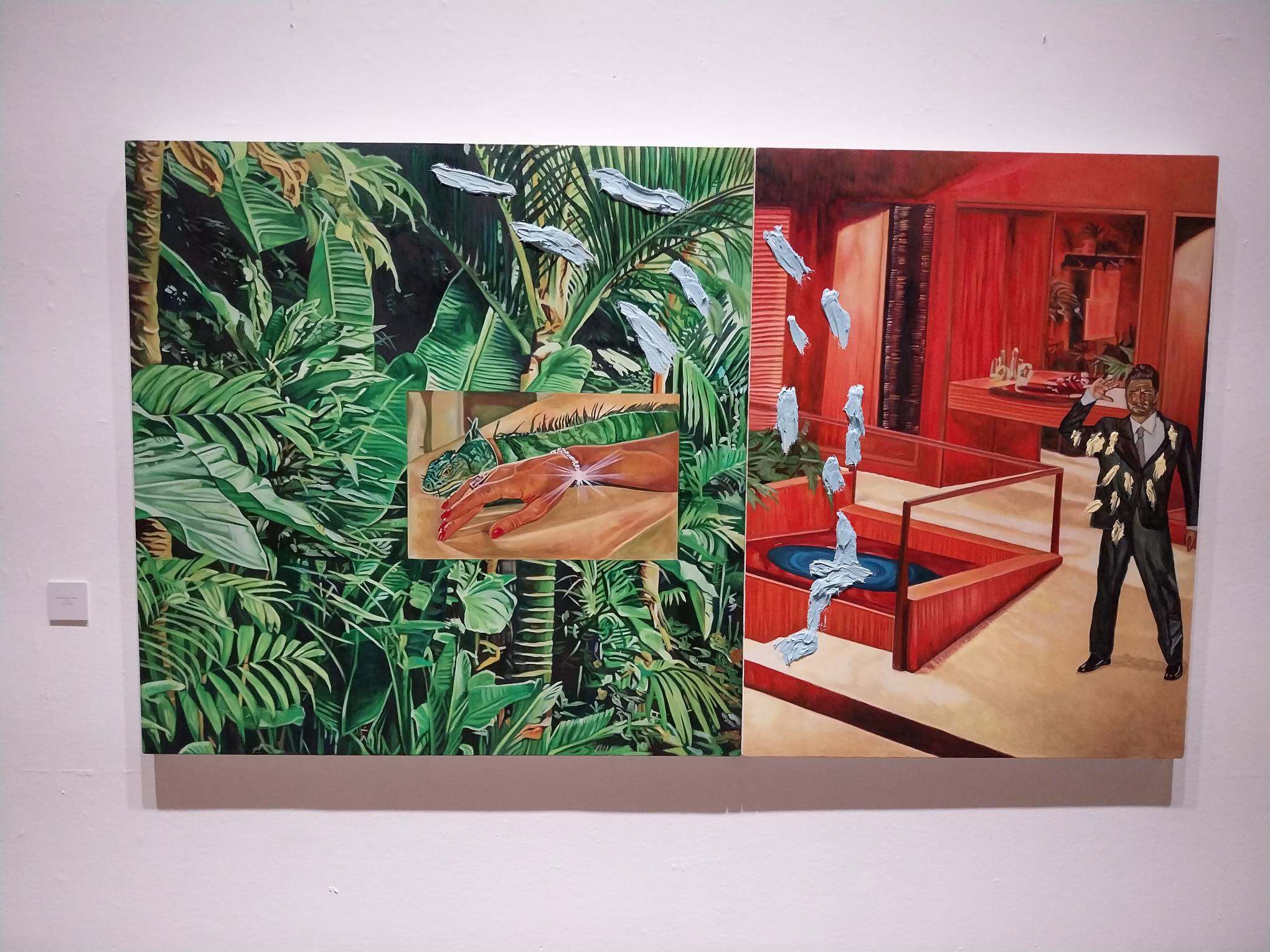
These paintings are vivid and colorful, showing people in different states of relaxation while a cornucopia of wildness surrounds them. Her subjects seem to find a sense of calmness and normalcy within the forests. Lafuente describes nature as an active muse, one that calms her during distressing times.

“When I went to somewhere like nature—for example, the beach or in the mountains, it calms me. And [then my] mind will [reset],” she said. “I connected [my artwork to] the feelings that I felt when I’m in nature.”
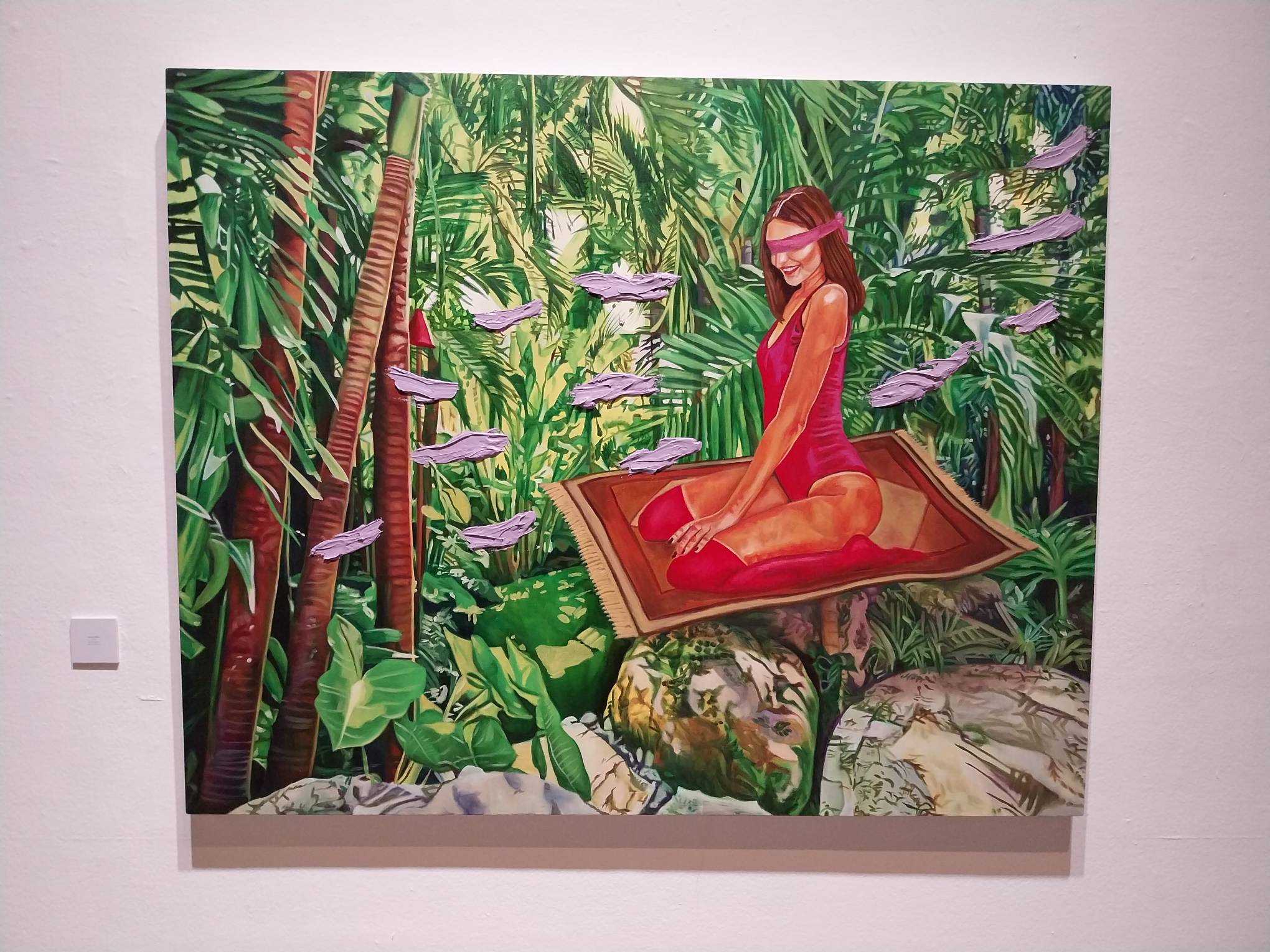
Works like “Love is Blind” or “Lazy Daisy” transport audiences to worlds both familiar and new. Some, like “Whatever” or “Shine Bright Like A Diamond,” mix vintage technology with nature. In these paintings, the two different elements almost forcibly interact with each together. For Lafuente, it represents the sense of “greater power” that nature has over humanity and its progress.
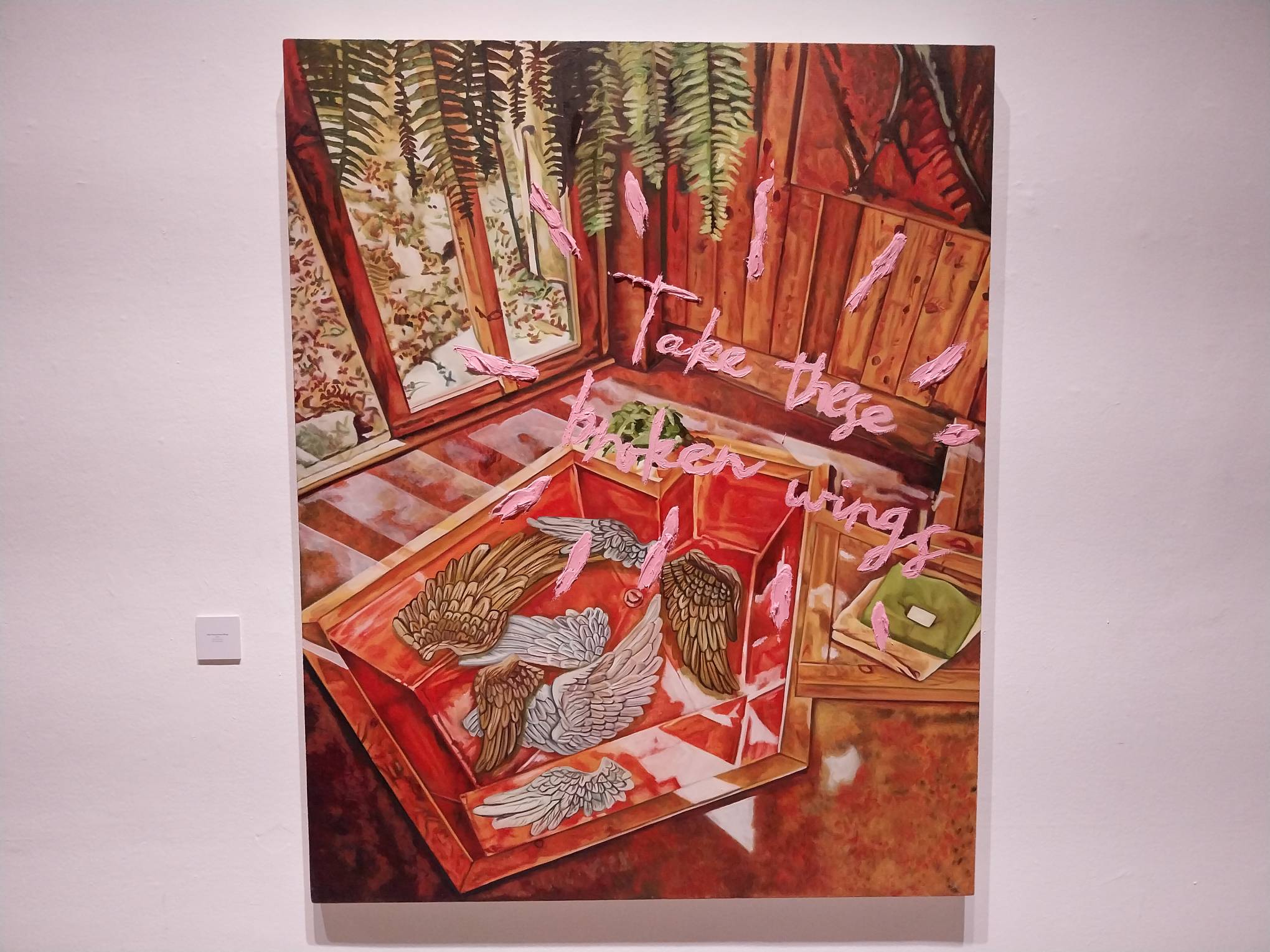
Discussing different artworks like “Whatever” or “Take These Broken Wings,” Lafuente links them together with her personal troubles and traumas. She sees some of these works as an escape from the heavy feelings of the past, a way of processing her emotions of the moment.
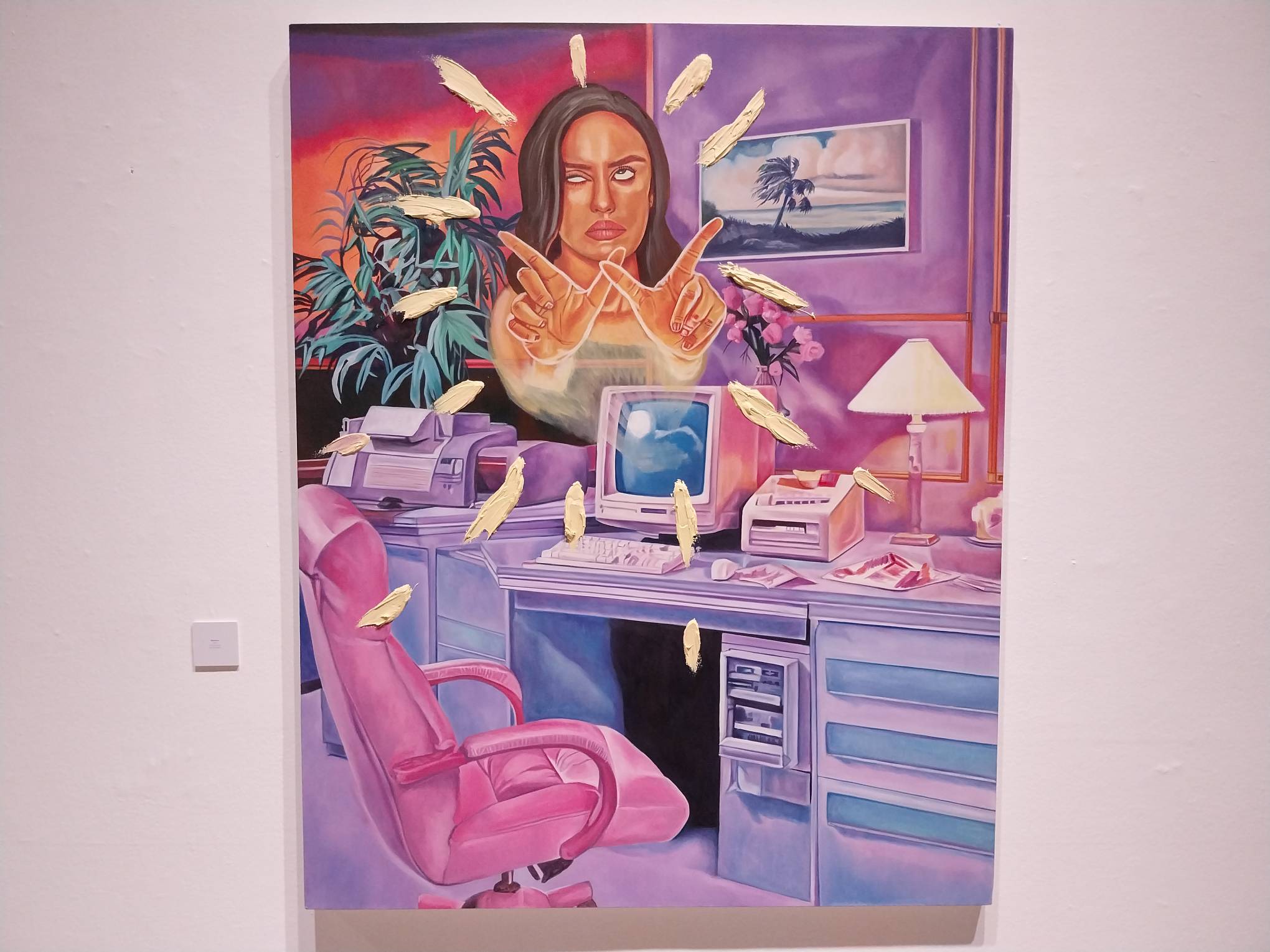
“For me, these are personal experiences,” she said. “For example, [“Take These Broken Wings”], I had a traumatic experience […] that happened in my life. The wings represented the experience I was carrying, like, it’s like a burden that I was carrying for so long. And then, finally now, I released it and I feel free.”
‘Painting Patterns’
Finale Art File’s second exhibit for November is Garryloid Pomoy’s Painting Patterns. This exhibit fuses paintings of sewing materials with the sewing materials themselves, crafting an interesting mixed media exhibit that thrives on subtlety.
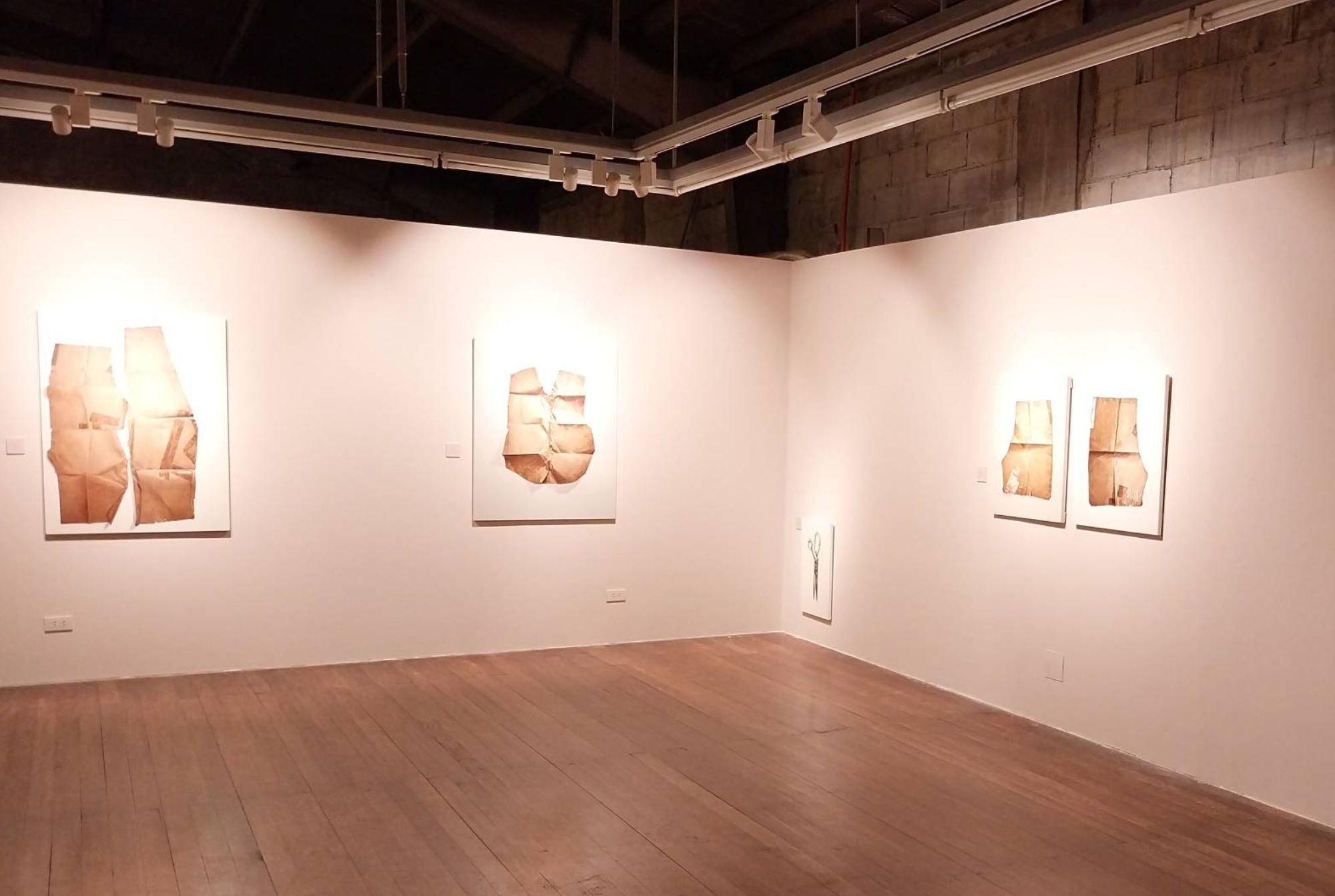
The idea came from “single thread,” a past work of Pomoy’s. For that work, he painted a sewing machine before adding a red thread to complete the painting. For this exhibit, he expands the idea, putting pins and threads on paintings of sewing materials. He incorporates these materials as a way of contrasting both of these different processes for the viewer.
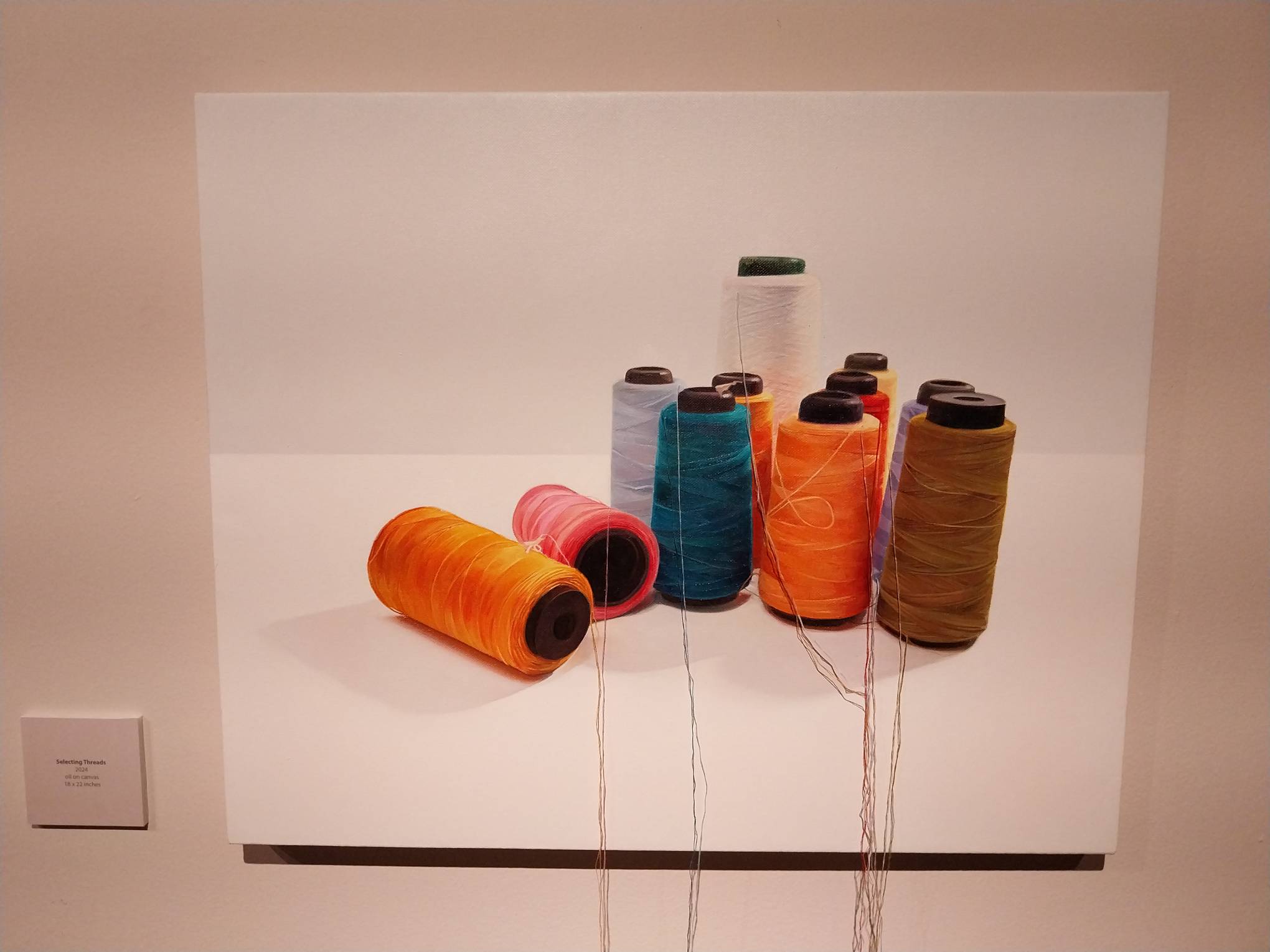
Pomoy said that this was inspired by his mother, a seamstress. She would save materials and equipment for him to use in the future, which apparently confused him because he didn’t believe he would sew like his mother.
“Before kasi, may conversation ako sa mom ko na, parang kini-keep na yung mga gamit na ito for my future use,” he said. “Parang sinasabi na baka magamit ko, ganyan. Then, ako naman, hindi ko naman din alam na ano ba, akala ba niya magiging mananahi ako someday or ganyan.”
(In the past conversation, my mother said that she’s keeping some of the material for my future use. That it might be something I can use in the future. For me, I didn’t know what to do about it, if she thought I was going to be a sewer one day.)
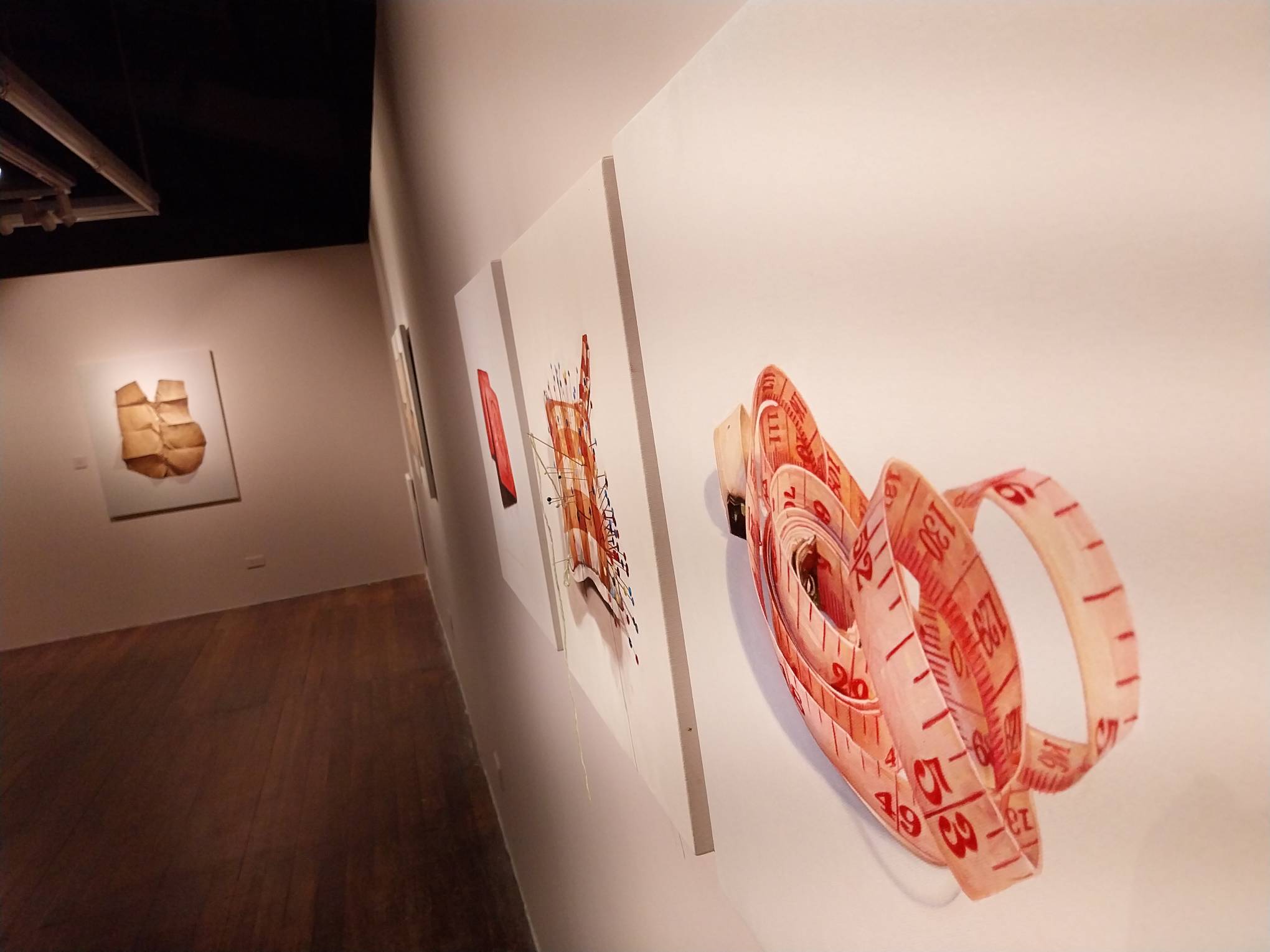
In the end, he utilized the equipment to bring these old, saved patterns to life through his art. With his methodology, he finds new meaning in the past, merging the two worlds and finding the intersection of his practice with his mother’s past work.
“Ginamit ko siya as—ginamit ko pa rin yung pattern na kineep niya, but in my way as an artist,” he said.
‘For The Love of Art, and Art is Labour’
The final exhibit this November at Finale Art File is Tekla Tamoria’s For the Love of Art, and Art is Labour. Here, Tamoria utilizes her embroidery skills to create frames of a short film piece by piece on different squares of white fabric.
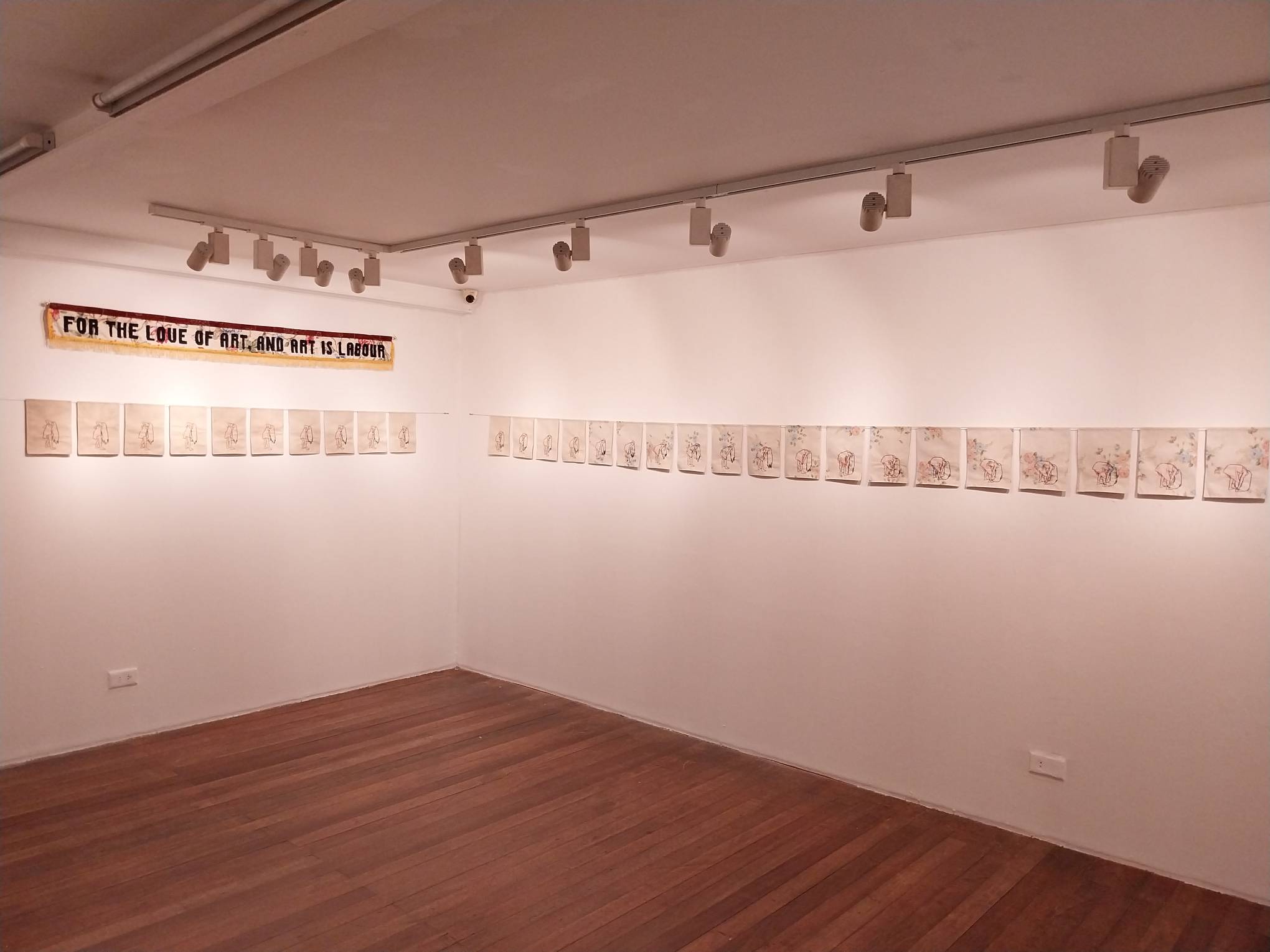
“She shows her love for her work, the repetitive aspect of making art, and the routine of working as an artist,” the exhibit write-up by Mica Sarenas said.
Over 80 pieces of embroidery make up this exhibit. These pieces are featured in a short animated piece made by Tamoria depicting a young woman as she stands up and down amidst an elaborately-changing white and flowery background.
It’s certainly an interesting piece due to the hand-stitched nature of the animation. Tamoria takes the time to add different distinguishing features for each frame, from new thread colors to a changing background of plant life and flowers. The elaborateness of the work puts the viewer in the artist’s perspective, pondering upon the unseen labor of even the simplest artwork.
“The process and how art is made is important for her to show in the exhibit,” Sarenas wrote. “Making art may be work and maybe repetitive, but Tekla continues to love it. It is through work that she finds a vulnerable state. A state that is comforting, trusting, and where she can be herself.”
In the end, Tamoria makes a case for the distinctiveness of craft. Even in the simplicity of an idea, what differentiates it is the amount of effort and care given by each artist to bring them to life. Even in a short, 80-framed animated film, Tamoria finds her voice in what the labor and effort tells about them.
Finding Feelings in Craft
For these three Finale Art File exhibits, the works bear the mark of their own personal experiences in every paint stroke and thread used in the process. Art gives relief to its artists, the outcome of an outpouring of emotions onto the canvas and fabric. The art embodies parts of themselves, and finds new meaning to even the most traumatic experiences.
Photos by Elle Yap.
Related reading: Winna Go Explores Asian Diaspora and Migration in New Exhibit
